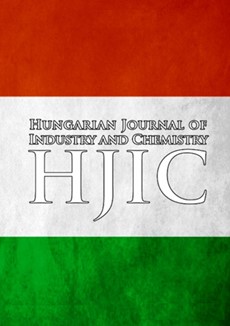Improvement of Biofilm Carriers for the Treatment of Automotive Industry Wastewater
DOI:
https://doi.org/10.1515/309Keywords:
automotive industry wastewater, biofilm carrier, CNT, COD removal, emulsion sewageAbstract
The efficient biological treatment of the wastewater of the automotive industry is difficult, mainly because of the low biological oxygen demand/chemical oxygen demand (BOD/COD) ratio. Moreover, wastewater of the automobile industry contains heavy metals and other chemical substances that may have toxic effects. Biofilm and hybrid technologies could be optimal solutions for the treatment of such heavily biodegradable wastewater streams. This paper presents the experimental results of the examination of modified biofilm carriers developed for the treatment of the wastewater of the automotive industry. Three modified biofilm carriers were examined: a high-density polyetyilene (HDPE), an HDPE modified with 50% carbon nanotube (CNT) content, and an HDPE modified with 75% CNT content. They were compared to a patented biofilm carrier having similar morphological properties (control). The examination consisted of two parts: (1) studying the colonisation of biofilm on each carrier, and (2) studying the biological COD removal efficiency of biofilm reactors filled with the four different biofilm carriers in 25% volumetric ratio each with an influent industrial emulsion sewage. The obtained results demonstrated that neither the rate of biofilm colonisation, nor the COD removal efficiency show any significant difference comparing the four biofilm carriers. The colonisation of biofilm was appropriate on each carrier and this ensured proper efficiency of COD removal in each biofilm reactor. Based on the results, it can be stated that the suggested advantageous characteristics of CNTs do not appear as it is mixed in the plastic raw material during the production of biofilm carriers. The absence of the significant difference observed between the examined carriers suggests that the production of biofilm carriers from recycled plastic could carry financial advantages compared to the control carrier. Further experiments could specify differences by various hydraulic loads or toxic effects.Downloads
Published
2012-09-01
Issue
Section
Articles
How to Cite
Improvement of Biofilm Carriers for the Treatment of Automotive Industry Wastewater. (2012). Hungarian Journal of Industry and Chemistry, 40(1), 1-4. https://doi.org/10.1515/309




